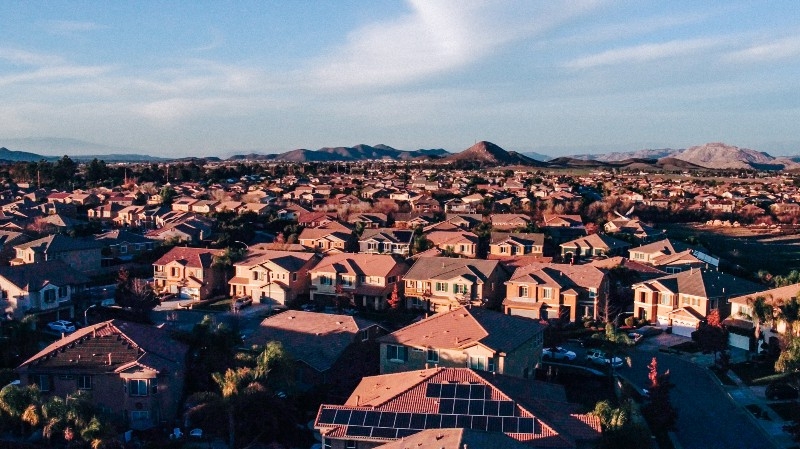In the energy industry, we talk about two kinds of solar power. On one hand, there’s “utility-scale” solar, which refers to big, ground-mounted installations that are either owned by utilities or sell power to utilities — in other words, they’re a lot like a zero-carbon version of a traditional power plant. On the other hand, there’s “distributed” solar, a catchall term that generally refers to smaller solar panel installations on the rooftops of homes and businesses that are seeking to reduce the costs and environmental impacts of their own energy use.
While utility-scale solar is currently responsible for the majority of total solar power generation in the U.S. thanks to the sheer size of these installations — think massive solar farms springing up in the desert — distributed solar is also holding its own thanks to the fast-growing home solar industry. Yesterday, Utility Dive observed that the latest data from the Department of Energy’s Energy Information Administration (EIA) shows that distributed solar now accounts for 30% of all U.S. solar generation. Not only that, but residential solar generation has grown by more than 50% compared to 2015, and accounts for 68% of the distributed solar segment (compared to 25% commercial and 7% industrial consumers).
The growth in homes using solar panels may not be news to anyone that’s been following this industry, but the fact that we even have these kinds of numbers to talk about is a relatively recent development. As Utility Dive notes, EIA only began including figures from distributed generation in its monthly data last December. And in California, home to more solar power than any other state, the Independent System Operator (CalISO) doesn’t include distributed solar in its generation data. Greentech Media tried to piece together an estimate from a variety of sources earlier this month and found that distributed solar likely accounts for more than a quarter of the state’s total.
These attempts to get more detailed generation data points to a more complex shortcoming: a desire for more data on the many unique benefits that solar panels for homes and businesses deliver. For instance, by reducing demand on the grid from homeowners and businesses, distributed solar can reduce congestion and eliminate the need for costly upgrades to local distribution networks. Similarly, because distributed solar is located where power is consumed, it doesn’t require construction of expensive (and sometimes environmentally disruptive) new transmission lines. Perhaps most importantly, distributed solar increases the resiliency of our energy system by providing on-site power in case of outages to the grid — events which are becoming more common thanks to extreme weather events characteristic of our changing climate.
These types of benefits are fundamentally harder to measure than just counting kilowatt-hours. This is particularly true for the value of solar as a backup power source, which may not be “worth” anything under normal conditions but could be massively valuable — even life-saving — in the event of a multi-day power outage. Distributed solar also yields major non-energy benefits, like creating tens of thousands of jobs for home solar installers across the country. And at Mosaic, we also believe there’s a huge intrinsic value in empowering everyday people to join the clean energy revolution and mobilize in the war against climate change.
The more data we get about distributed solar the better, and the good news is there are lots of important studies being conducted by utility regulators across the country to try and quantify some of the unique benefits of our sector. However, these studies will always be conservative in their estimates, since they will tend to value the things that can be easily measured such as avoided distribution costs or ancillary grid services.
Ultimately, a true valuation of home solar panels must also consider all the ways that it advances the “big picture” goals of our society — things like greater resilience, good jobs, energy independence, and a safe climate we can pass on to future generations. Numbers are great, but they only tell part of the story of why we’re building a clean energy economy.
